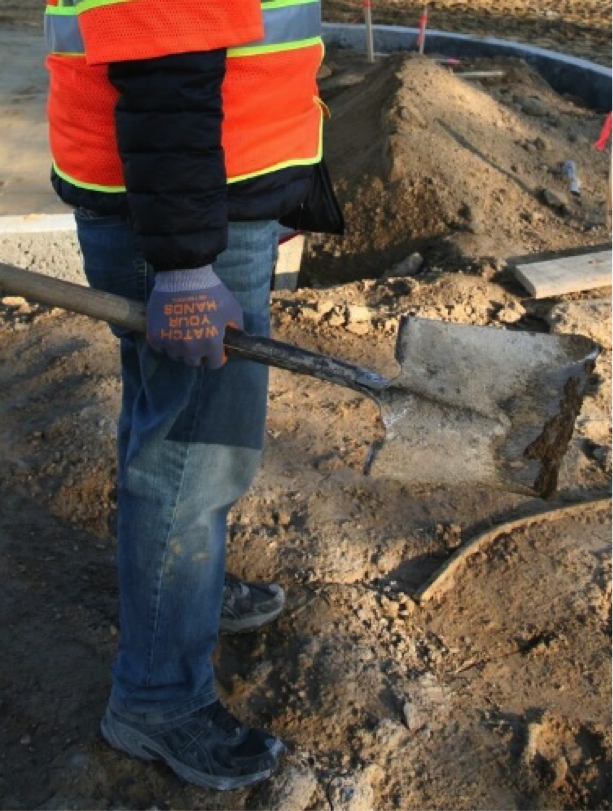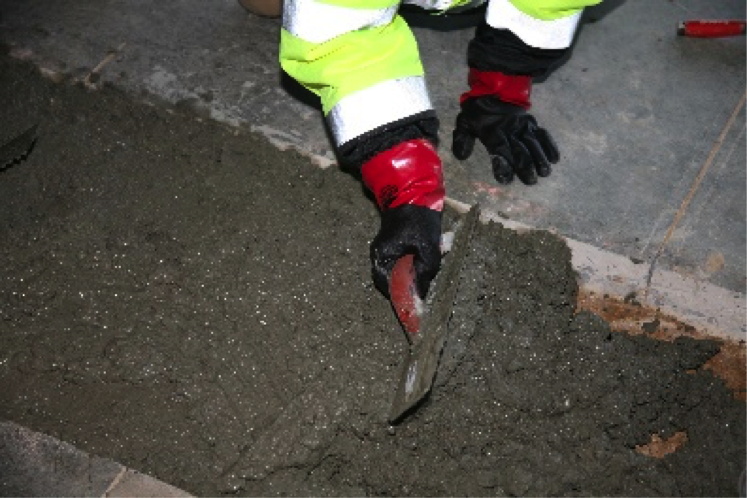An Overview of the Concrete Manufacturing Process, Safety Concerns
Posted by Anthony Webb on Nov 25th 2024
The manufacturing of concrete has come a long way since its days of crushed and burned limestone. A craft that began as a basic mixture of crushed stone, sand, and water in early civilizations has evolved into a complex industry, making up approximately 10% of US domestic gross national product. Today it involves advanced chemistry to create the compounds which makeup modern day structures and roadways.
The evolution of today’s concrete industry has grown into a multitude of concrete types, ranging from plain to reinforced concretes with embedded steel bars and rods. While innovation has helped humankind build great structures like the Hoover Dam, many age-old safety problems and concerns still loom.
MCR Safety understands the intricacies of the industry and the safety gear required to protect laborers. With this in mind, we put together a basic overview of the concrete manufacturing process, along with highlighting potential safety risks and safety gear to consider.
Types of Concrete
Before we dive into the manufacturing process and safety concerns, here is a brief recap of some common types of concrete.

Plain
This is most commonly used in the construction of buildings and roadways, plain concrete is composed of the traditional mix of cement, sand, gravel and the proportionate amount of water.
Lightweight
This is most commonly used to protect steel structures and for thermal protection, it can be composed of a variety of materials like pumice, clay or perlite and is identified by having a density less than 1920 Kg/meter.cube.
Air Entrained
This is a form of plain concrete infused with thousands of air particles created by infused foam or other chemical
agents. This type is particularly resistant to freezing and thawing.
Heavy Weight
This is most commonly used in structures with high levels of radiation, is composed mainly of high-density crushed rocks and is identified as having density levels between 3000-4000 Kg/meter.cube.
Reinforced
Regarded as the “most important” type, reinforced concrete is identified by its integrated steel reinforcements by way of bars, rods or mesh. This type was designed to have high tensile strength for maximum durability in erecting bridges and other weight bearing structures.
Precast
This type is not identified by the materials used to create it but rather its shape and preparation before it is brought to a job site. Cast in molds and hardened in a controlled environment, different types of precast concrete include stairways, poles or blocks.
Concrete Manufacturing Processes Overview
We put together this basic overview of the manufacturing process to provide a high-level view of the tasks at hand.

- Batching -The first step involves gathering the ingredients necessary to produce the particular type of concrete. The type of batching, volume or weighted, is contingent on the amount of concrete being produced. Volume batching, typically involved in producing smaller batches, requires a tedious amount of manual gauge box measuring and lifting. Due to the strenuous environment, this stage of the manufacturing process requires critical care in selecting the right safety gear to safeguard against cuts, blisters and other environmental hazards.
- Mixing - Depending on the type and quantity needed for a particular job, concrete can be mixed by hand, by stationary mixer, or during transport. Regardless of how it is mixed, the critical point is to ensure the concrete is uniform in color and consistency for optimal setting. Hand mixing cement, using shovels, and other mixing tools takes its toll on workers’ hands, again requiring a strong durable glove for enhanced protection.
- Transporting and Placing - Methods of transporting concrete vary widely from wheelbarrow and manual hauling to conveyor belt operations, to more advanced projects involving cranes and pumps. All of these methods require some level of manual operating demanding advanced safety wear. From physically hauling wheelbarrows to operating and securing larger machines and equipment hauling the concrete, companies have an obligation to ensure their gloves meet safety requirements.
- Compacting and Placing - During mixing and transport air is often entrapped, greatly reducing the quality and strength. One of the final stages of production involves compacting the product to eliminate the air pockets and ensure durability. This can be done by involving machinery that temporarily liquefies the concrete, instantly expelling trapped air, or by hand tooling. The extremely lightweight and waterproof MG9648, shown in this picture, is the ideal choice for one using hand tools.
- Curing and Finishing - This process takes place immediately after concrete is compressed and involves close attention to detail regarding moisture levels and contracting as it dries. This process is crucial in preventing cracking and durability issues. Many types of curations involve potent chemicals to seal the slab that can be incredibly hazardous to workers if exposed.

Assessing Risk
When it comes to concrete applications and processes, you want to make sure every effort has been made to ensure the right gear has been selected. When it comes to injuries, 18 percent of all concrete industry injuries are from cuts, lacerations, or punctures. Furthermore, the third most frequent event causing injuries occurs from being struck by an object. These types of injuries easily occur if proper PPE is not worn at all times.
MCR Safety understands that risk assessment is vital to protecting employees. For that reason, we’ve designed a unique 360 Protection Program emphasizing risk reduction, cost savings, and productivity. This program provides users with a comprehensive selection process that ensures proper safety gear is worn. With our help, conducting a PPE audit can help companies equip their employees with the most optimal safety gear.
Our MC503 UltraTech glove shown above gripping light weight concrete provides the durability, coverage, and reinforcement needed for concrete laborers to avoid cuts, lacerations, and punctures. In addition, the MC503’s TPR ensures back-of-hand protection for applications where one might be struck by an object.
Keep in mind, there are other tools at your disposable for assessing safety risks. OSHA has created this pocket size safety series PDF for concrete manufacturing.
Selecting the Highest Quality
MCR Safety takes great pride in knowing employees are equipped with the industry’s highest quality products. Our ITC Innovations Technology Center ensures this is possible through its diligent work in testing glove quality. The ITC Lab is the only ISO 17025 accredited lab to perform ANSI/ISEA 105-2016 cut resistance, abrasion resistance, puncture resistance, and conductive heat resistance testing in North America. Our ITC offers no cost testing for users interested in knowing the quality level of current PPE being worn or for potential new products being considered. Contact us today for lab testing or a 360 evaluation.

